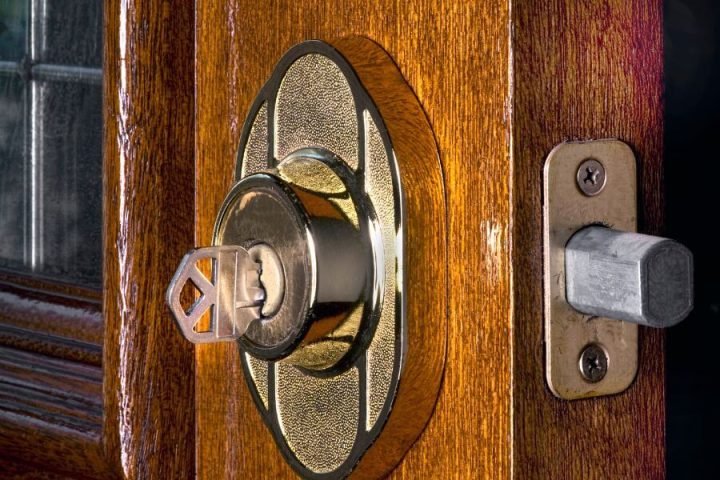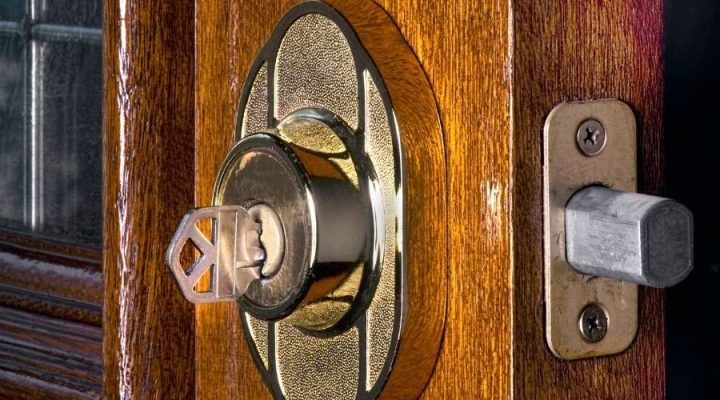
Honestly, this is one of those annoying home problems that doesn’t make sense at first. Why would a simple twist and push suddenly be the difference between a secure door and an unlocked one? The answer has to do with how deadbolts line up with your door frame, and how a few millimeters can throw the whole thing off. Let me explain how it happens, and what you can do about it, in plain language—no locksmith degree required.
What’s Happening When You Jiggle the Deadbolt?
First, let’s break down what’s really going on. A deadbolt is designed to slide a thick metal bolt straight into a hole (the strike plate) in your door frame. If everything lines up perfectly, the bolt glides in and the door locks with that satisfying “click.” But if the bolt barely misses the hole—even by a hair—you’ll find yourself wiggling or pushing the door to make it fit.
Here’s the thing: doors and frames aren’t set-and-forget. Over time, houses settle, wood expands and contracts, and hardware loosens. That “jiggle” you do is actually forcing the bolt to line up with the strike plate. Imagine trying to plug in a phone charger that’s just a little off—sometimes you have to wiggle it so the connectors meet.
When the deadbolt doesn’t slide smoothly, it’s almost always about alignment. Either the door is moving a bit out of place, the strike plate has shifted, or the bolt itself is sticking. Every time you jiggle, you’re manually matching pieces that have drifted apart.
Common Causes: Why Deadbolts Get Out of Line
Deadbolts can stop working smoothly for a handful of reasons, and most have nothing to do with the lock itself. One huge culprit is a shifting door. Doors are made from wood or composite, and environmental changes can make them swell or shrink. If it’s been humid or rainy, your door might expand, making the bolt’s pathway tighter.
Another reason could be loose or wobbly hinges. When hinges start to pull out or sag, the heavy door sags along with them. This subtle dip throws off the perfect alignment between your bolt and the strike plate. Suddenly, your deadbolt only works when you pull up on the handle or push the door.
Also, house settling is a sneaky player here. As foundations shift over time, the frame may twist ever so slightly. It doesn’t take much for that strike plate hole to be off-center for your deadbolt. It might seem like a tiny change, but a deadbolt won’t forgive even a 1mm misalignment.
Deadbolt Mechanism: How It Actually Works (and Why That Matters)
Most people see the key or the thumb-turn, but inside, a deadbolt has a simple sliding metal bar. When you turn the key or knob, the bar slides outward. If it hits anything besides the open strike plate, it stops. There’s no code, sync, or reset button—just good old-fashioned force and alignment.
It’s a bit like trying to slide a desk drawer closed when there’s a sock stuck behind it. The deadbolt wants a clear path, and any resistance makes it jam or stick.
If the lock *sometimes* works but only with a jiggle, odds are the mechanism is fine but the pathway is just barely blocked. If you hear grinding, or if it takes real effort to turn the deadbolt even when the door is open, then the problem might be inside the lock itself. But usually, if your deadbolt works perfectly with the door open but jams shut, the door or frame is the true villain.
Troubleshooting Steps: Finding the Real Problem
You might be wondering: where do I even start? There’s a logical way to pinpoint what’s wrong. Here’s a step-by-step checklist anyone can follow:
- Test the deadbolt with the door open: If the lock turns smoothly, your deadbolt isn’t the issue. The problem is the alignment between the door and frame.
- Check your strike plate: Look at the metal plate on the frame. Is the hole worn, out of shape, or does it look off-center? That’s your target.
- Inspect the hinges: Open the door wide and gently lift it up and down. If you feel movement, the hinges might be loose or pulling away from the door or frame.
- Look for signs of moisture: Swollen wood or visible gaps? Seasonal changes play a big part in door alignment problems, especially with older homes.
If the deadbolt is sticky even when the door is open, a shot of graphite or silicone spray in the lock might help—but don’t use oil, as it can gum up and attract dirt over time.
How to Fix a Deadbolt That Needs Jiggling
Here’s the part where you can actually do something (without calling a locksmith—at least not yet). Most fixes are about realigning, tightening, or slightly adjusting the door or hardware.
- Tighten the hinges: If your door drops, try tightening all the hinge screws. If the holes are stripped, use longer screws or a dab of wood glue and matchsticks to secure them tight.
- Adjust the strike plate: Sometimes, moving the strike plate just a little lower, higher, or deeper solves the issue. You can unscrew it, reposition, and reattach—or file down the hole for a bigger opening.
- Check for swelling: If the door is sticky along the edge, a quick planing or sanding (and a coat of paint or sealer) can make it shut easily again.
- Lubricate the bolt: If all else fails and the bolt itself seems sticky, a spritz of graphite or silicone spray can free things up.
If your deadbolt is a smart lock or has a keypad, make sure the batteries aren’t low. Low power can make the motor weak, and what seems like a “jiggle” issue might just be a battery reset away.
When to Call a Locksmith (or Upgrade Your Lock)
Most deadbolt alignment issues are DIY-friendly, but sometimes professional help is the safest bet. If you’ve tried all the above and your deadbolt *still* won’t work—even when the door is open—it could mean the internal lock mechanism is broken or worn out. For older Schlage or Kwikset locks, parts can wear down or fail after years of use.
Upgrading to a newer smart lock or a high-security model can solve more than one problem. For example, modern deadbolts are better at resisting door warping, and some allow you to re-code, reset, or pair new keys. Don’t forget to research what brands or models work with your door’s thickness and setup—universal doesn’t always mean “fits every door.”
A pro locksmith can also help if your door frame is seriously out of whack. Sometimes, the fix involves adding a metal plate or even resetting your whole door. That’s not something a tube of wood glue and a screwdriver can handle.
How Seasonal Changes and House Age Play a Role
Let me tell you—weather and old houses are tough on doors. If your deadbolt only sticks in the summer or right after a rainstorm, you’re likely seeing a classic case of swelling wood. Older houses, especially those with wood frames, shift a little every year. Even a new home settles for years after it’s built.
If you notice your deadbolt is smooth in the winter but sticky in the summer (or the other way around), track when the problem shows up. That “jiggle” might only be necessary when humidity peaks. Over time, you can pre-emptively sand or seal the door, or tweak the strike plate in problem months.
Smart deadbolts add another wrinkle. If your Kwikset or Schlage smart lock fails to fully unlock or lock except with a jiggle, it might need a battery reset or a factory sync. Mechanical friction plus low power equals trouble—even with techy locks.
Comparing Deadbolt Types: Are Some More Forgiving?
Not all deadbolts are created equal. Traditional single-cylinder deadbolts (the classic key or thumb-turn style) are usually more tolerant to small misalignments. Double-cylinder deadbolts, which use a key on both sides, tend to be fussier.
Smart deadbolts with motorized bolts (like some Schlage or Kwikset models) can get jammed more easily. The internal motor doesn’t have the “oomph” of your hand when things are tight. If your smart lock constantly needs to be reset or physically jiggled, it may not be the best match for an old, shifting door.
Universal deadbolts claim to fit any standard door, but in reality, older frames and unique setups can challenge even the most adjustable hardware. Sometimes, a little custom work is needed—a slightly larger strike plate, a shim, or a hardware swap.
Can You Prevent Deadbolt Alignment Problems?
The good news is, a little prevention goes a long way. Every year or so, check your doors for signs of sagging or swelling. Tighten those hinge screws, especially on heavy exterior doors. If you’re painting or sealing your door, don’t forget the edges, where moisture sneaks in.
If you’re adding a new smart deadbolt, test everything with the door open and shut before finalizing the installation. Make sure the bolt glides effortlessly from day one. If you find yourself having to reset, pair, or code your smart lock more often, check for mechanical misalignment before assuming the electronics are to blame.
Bottom line: most “jiggly deadbolt” issues are mechanical, not fancy codes or sync problems. Focus on the basics—tighten hardware, align the bolt, and keep things lubricated—and you’ll keep your door secure and your sanity intact.
In the end, a deadbolt that only works with a jiggle is trying to tell you something: a little maintenance now is better than getting locked out later. Pay attention to how your door feels, listen for changes, and don’t be afraid to grab a screwdriver or call a pro if your fixes don’t stick. A strong, smooth deadbolt just feels right—and keeps your home feeling safe.
